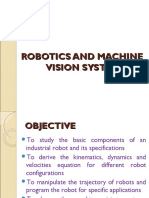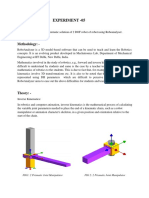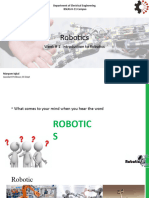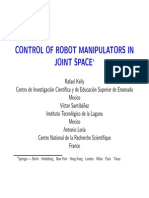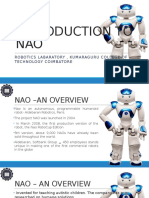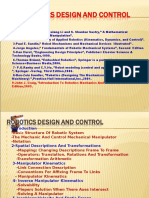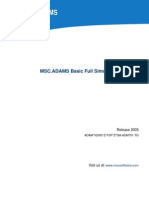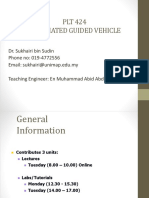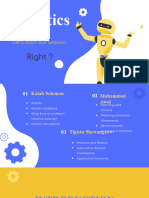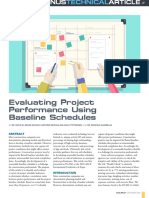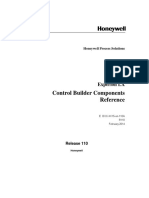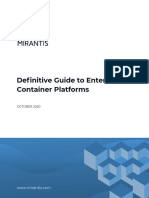100% found this document useful (1 vote)
335 views70 pagesField Robotics
This document provides an introduction to the course ED 5315: Field and Service Robotics. It outlines the objectives, learning outcomes, syllabus, textbooks, and grading structure of the course. The course aims to introduce students to the kinematics, dynamics, control, and applications of field and service robots. Key topics covered include mobile robots, underwater robots, aerial robots, and medical robots. The syllabus includes modules on robot classification, sensing and perception, localization and mapping, autonomous mobile robots, and various types of field/service robots.
Uploaded by
Skanda SwaroopCopyright
© © All Rights Reserved
We take content rights seriously. If you suspect this is your content, claim it here.
Available Formats
Download as PDF, TXT or read online on Scribd
100% found this document useful (1 vote)
335 views70 pagesField Robotics
This document provides an introduction to the course ED 5315: Field and Service Robotics. It outlines the objectives, learning outcomes, syllabus, textbooks, and grading structure of the course. The course aims to introduce students to the kinematics, dynamics, control, and applications of field and service robots. Key topics covered include mobile robots, underwater robots, aerial robots, and medical robots. The syllabus includes modules on robot classification, sensing and perception, localization and mapping, autonomous mobile robots, and various types of field/service robots.
Uploaded by
Skanda SwaroopCopyright
© © All Rights Reserved
We take content rights seriously. If you suspect this is your content, claim it here.
Available Formats
Download as PDF, TXT or read online on Scribd
/ 70
